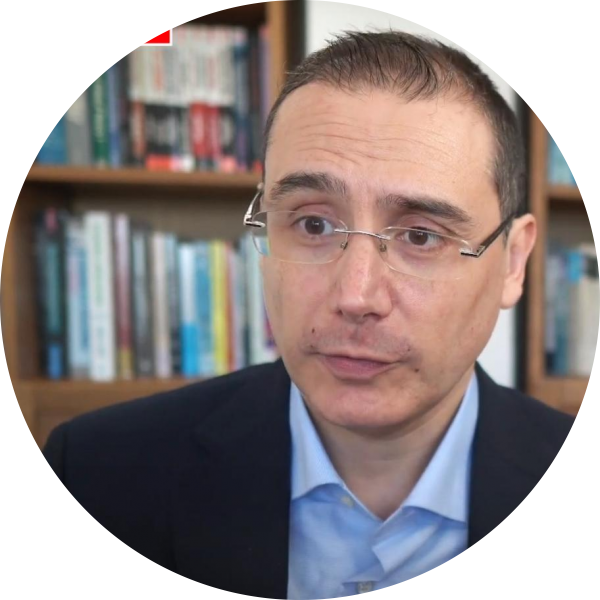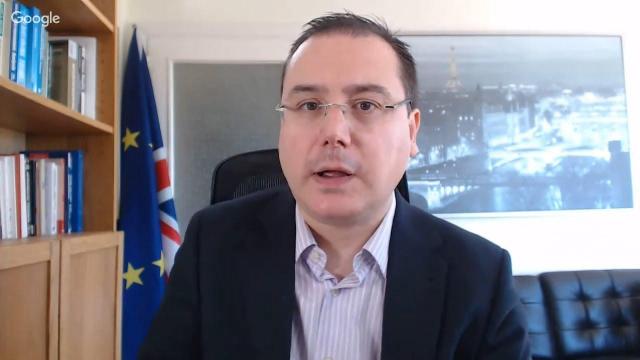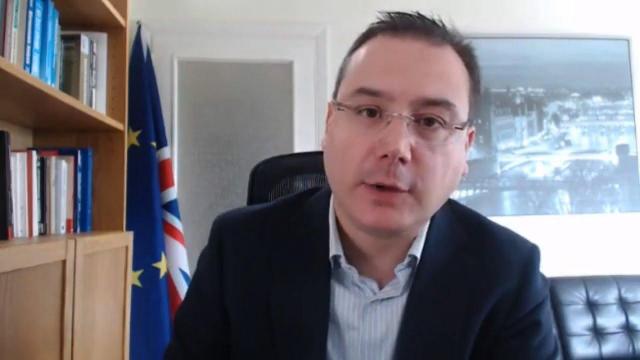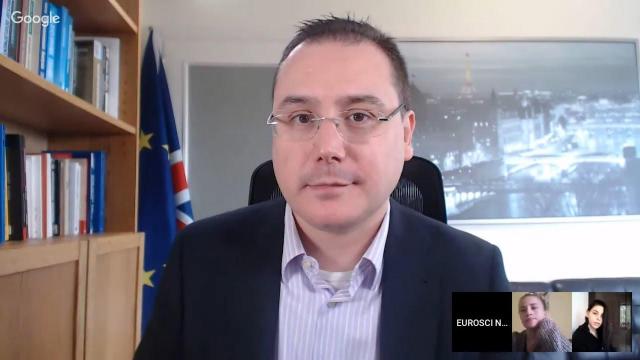Politicile Uniunii Europene
Primary tabs
Aceasta disciplină îți va prezenta ceea ce face Uniunea Europeană în mai multe domenii, cum ar fi politica economică (piața unică, UEM), politica socială (cetățenie, agricultură, regiuni) și politica externă (comerț, dezvoltare, PESC). De asemenea, te va introduce în analiza economică și politică a politicilor UE, ceea ce îti va permite să dezvolți abilități analitice și teoretice generale care te vor servi ca fundații pentru studii mai avansate sau că să le transferi direct în joburi neacademice. Întrebările și discuțiile de seminar despre teme importante de actualitate te vor încuraja să dezvolți abilități practice, cum ar fi capacitatea de a cerceta în mod independent, de a oferi și de a primi evaluări de la colegi și de a dezbate pentru a elucida o problemă.
Mai specific, obiectivele disciplinei sunt de trei tipuri: 1) EMPIRICE-DESCRIPTIVE: furnizarea unei descriere detaliată a ceea ce Uniunea Europeană face în diferite domenii politice, de la politica pieței unice la politica socială sau externă. 2. TEORETICE-ANALITICE: explicarea acestei realității cu ajutorul unor teorii pozitive din domeniul economic și politic. Printre altele, aceste teorii ne vor ajuta să înțelegem următoarele probleme: de ce economia regiunei Nord Est a României nu crește așa de mult ca alte? De ce este atât de multa emigrație? De ce nu aderă România la Zona Euro? De ce este mâncarea mai scumpă in UE decât in SUA? De ce regiunea Nord Est primeste atât de multe fonduri europene? De se dau burse postdoctorale din fondul social european în țări cu sisteme de educație bazică deficiente? De ce a durat negocierea acordului comercial cu Mercosur mai bine de 20 de ani? 3. NORMATIVE/CRITICE: dezvoltarea unei abordări normative/critice întemeiate pe o analiză solidă a realității față de problemele cu care cetățenii și liderii UE se confruntă și se vor confrunta în deceniul următor. De exemplu: Ar trebui sa se impuna o taxă Google în UE? Ar trebui să adere România la Zona euro? Este Pactul de Stabilitate și Creștere prea strict sau prea flexibil? Este politica UE în domeniul concurenței prea strictă cu campionii europeni? Ar trebui să se mai extindă UE la Ucraina sau Moldova? Ar trebui să fie o armată europeană? Ar trebui să se liberalizeze comerțul cu SUA sau China?
Cheia pentru a debloca aceasta disciplină este dublă. Pe de o parte, politicile UE afectează cetățenii în mod diferit în funcție de grupul social sau teritoriu, ceea ce generează diferențe în preferințele lor pentru politicile UE. Pe de altă parte, aceste diferențe sunt rezolvate în cadrul sistemului instituțional actual al UE. Numai după analizarea conflictelor și regulilor jocului de elaborare a politicilor vom putea înțelege politicile UE.
INTRODUCERE: 1. Uniunea Europeana: conflicte politici, instituții democratice și politici publice. De ce politicile bune nu sunt necesar o idee bună pentru politicieni? Studiul științific al UE. POLITICILE PIEȚEI UNICE: 2. Uniunea vamală. Tarife și cote. Mobilitatea factorilor de producție. Câștigatorii și pierzătorii comerțului. Efecte sociale. Crearea și deturnarea comerțului. Efecte regionale. 3. Piața unică. Barierele netarifare: fizice, tehnice și fiscale. Recunoașterea mutuală și armonizarea. Impactul economic al pieței unice. Piața unică a servicilor. Piața unică digitală. 4. Uniunea Economică și Monetară. Teoria zonelor monetare optimale. Evoluția UEM. Modul de funcționare a UEM. Banca Centrală Europeană. Pactul de Stabilitate. Sixpack-ul. 5. Politicile pieței unice: politica concurenței, industrială și de competițivitate, armonizarea fiscală, transport, energie, mediu. POLITICILE SOCIALE: 6. Bugetul UE. Finanțarea bugetului. Resursele proprii. 7. Politica agricolă comună. Teoria, practica și impactul. Evoluția și reforma. 8. Politica regională: teoria, practica și impactul. 9. Politica socială. Fondul Social European. De la mobilitatea muncii la cetațenia UE. Spațiul Schengen, drepturile cetățenești, justiție. Erasmus. POLITICILE EXTERNE: 10. Politica comercială comună. Organizația Mondială a Comerțului. Tratatele comerciale. Masurile de aparare a comerțului. 11. Politica de dezvoltare. Politica de imigrație. 12. Politica externă și de securitate comună. 13. Extinderea Uniunii: teoria, evoluția. CONCLUZIE: 14. Coeziunea și reforma Uniunii Europene.
El-Agraa, A. (2015) The European Union Illuminated: Its Nature, Importance and Future. Palgrave Macmillan. Chapters 4-6; El-Agraa, A.M. (2011) The European Union: economics and policies, Ninth edition. Cambridge University Press. Chapters 6-25; European Parliament EU Fact Sheets; Hix, S. and B. Hoyland (2011) The Political System of the European Union, 3rd edition. Palgrave Macmillan. Chapters 8-12; Wallace, H., M.A. Pollack, and A.R. Young (eds) (2014) Policy-Making in the European Union, Seventh edition. Oxford University Press; Artis, M., and Nixson, F. (2007) The Economics of the European Union: Policy and Analysis. Oxford University Press.




